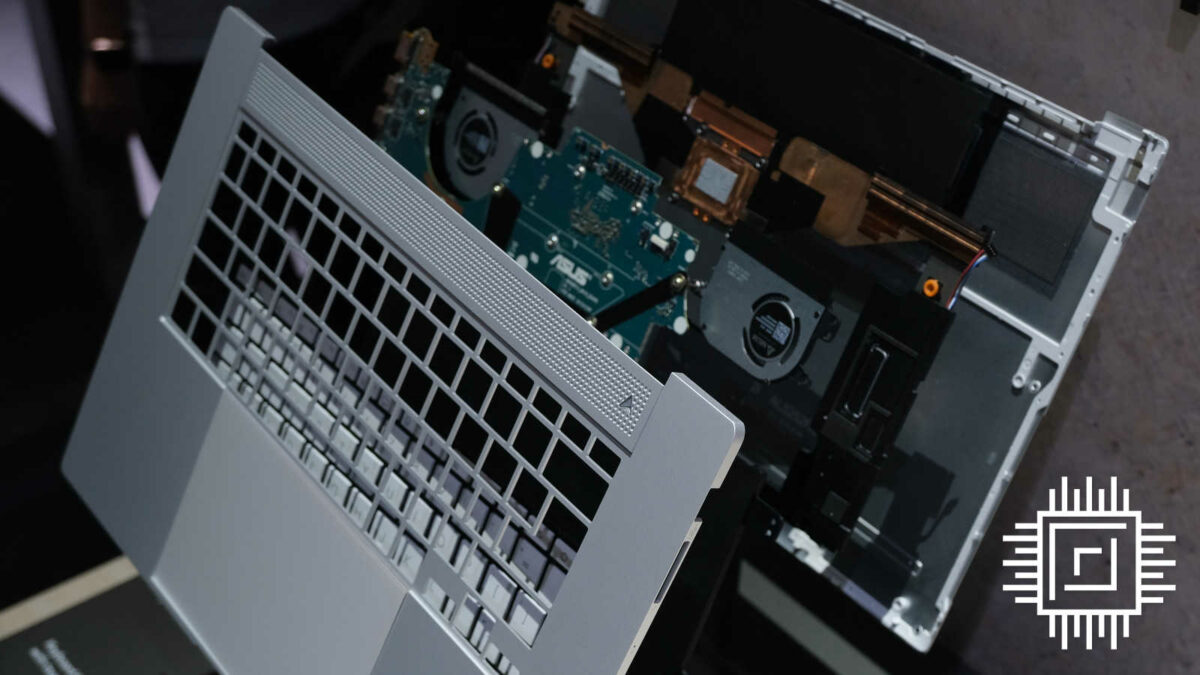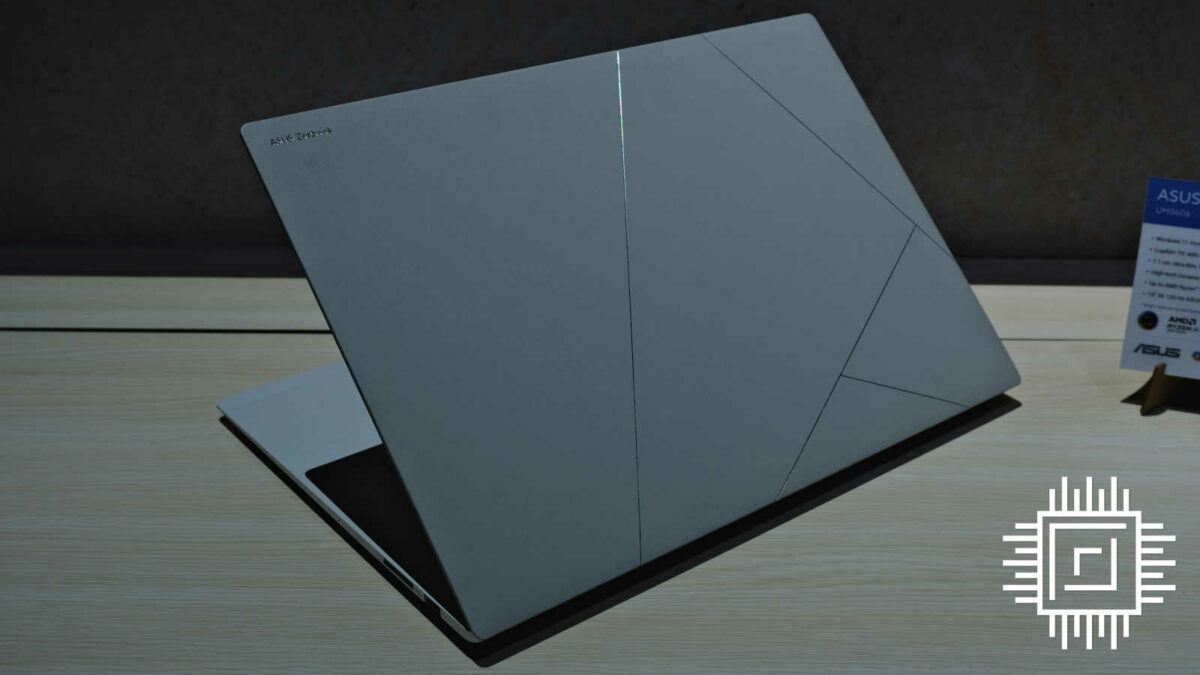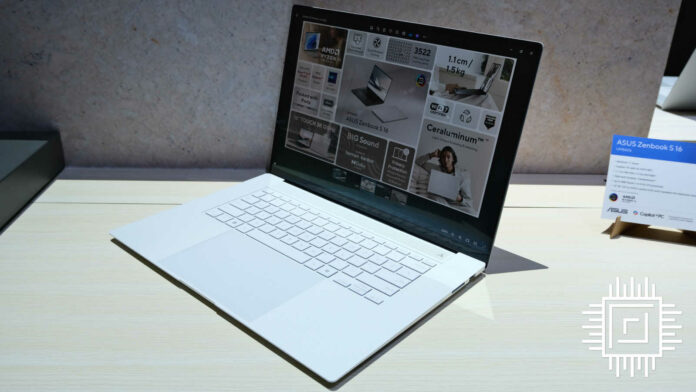Kicking off its Computex presentation, Asus revealed its Zenbook S 16. It’s the smallest 16-inch ultrabook on the market according to the company. Thin and light form factors usually come at the expense of performance, but Asus has managed to cram a surprising amount of watts under the hood. As such, this system should be equal parts stylish as it is powerful.
As the company’s flagship, Zenbook S 16 will undoubtedly rank among the best laptops for those in search of an ultrabook. Naturally, it boasts several upgrades compared to its predecessor, Zenbook 15, with Zenbook S 16 featuring new internal and external specs. While Asus naturally spent a great deal of time talking about the device’s AI capabilities, thanks to its shiny new neural processing unit (NPU), there’s plenty else to love here.

Asus Zenbook S 16 specs
AMD’s new Ryzen AI 300 series processors power Zenbook S 16. These chips provide uplifts to CPU, GPU, and NPU thanks to their new architectures (Zen 5, RDNA 3.5, and XDNA 2). Both the flagship Ryzen AI 9 HX 370 and stepdown Ryzen AI 9 365 are available with Zenbook S 16, with TDPs of 28W, much higher than the usual 15W seen with this form factor (though this is still well short of their maximum 54W TDP).
Zenbook S 16 is thin, 1.1cm to be exact, and so features an upgraded cooling apparatus to accommodate this 28W TDP. In addition to the usual assortment of a dual-fan module and bi-layer graphite sheet, Zenbook S 16 also has an ultra-slim vapor chamber and geometric grille design at its disposal. The latter two are impressive feats, with the grille design in particular increasing airflow by 50% compared to standard cooling vents.
As part of the switch to AMD Ryzen AI 300 series processors, Zenbook S 16 now supports USB 4 and comes equipped with two Gen 3 Type-C ports. While you’ll need to use one of these ports for charging, both support DP Alt Mode and power delivery, making Asus’ ultrabook an ideal pairing for high-end monitors. Despite its small stature, Zenbook S 16 still finds room for a USB 3.2 Gen 2 Type-A port, SD 4.0 card reader, 3.5mm combo audio jack, as well as a HDMI 2.1 port.
| Asus Zenbook 16 S specs | |
| CPU | Up to AMD Ryzen AI 9 HX 370 |
| GPU | Up to AMD Radeon 890M |
| NPU | AMD XDNA 2 (up to 50 TOPS) |
| RAM | Up to 32GB LPDDR5X (on board) |
| Display | 16in, 2,880 x 1,800, 120Hz, OLED |
| Storage | Up to 2TB M.2 NVMe PCIe 4.0 SSD |
| I/O ports | 3.5mm combo audio jack (x1) HDMI 2.1 (x1) SD 4.0 card reader (x1) USB 3.2 Gen 2 Type-A (x1) USB 4.0 Gen 3 Type-C (with DP Alt Mode and power delivery) (x2) |
| Battery | 78WHrs |
| OS | Windows 11 |
| Dimensions (W x D x H) | 35.36 x 24.3 x 1.19 ~ 1.29cm (13.92 x 9.57 x 0.47 ~ 0.51in) |
| Weight | 1.5kg (3.31 lbs) |
It may surprise you that Zenbook S 16 actually features a larger screen, despite its thinner and lighter 1.5kg footprint. The laptop now sports a 16in OLED display, with a native 1800p resolution and 120Hz refresh rate for a sharp and smooth viewing experience. The screen is also VESA Display HDR True Black 500 certified and Pantone Validated, meaning it should please casual and creative users alike with bright and accurate colours combined with OLED’s unmatched contrast.
Rounding this off, Asus has managed to fit a large 78WHrs battery inside Zenbook 16 S which combined with Ryzen AI 300 series processors should provide ample battery life. PCIe 5.0 storage options aren’t available out of the box with Zenbook 16 S, but you can swap in such a speedy drive later down the road should you wish. More frustratingly, though, Zenbook 16 S does not feature upgradable RAM, as Asus has opted to use soldered LPDDR5X modules in capacities up to 32GB.

Asus Zenbook S 16 performance
So, just how much better is Zenbook S 16 than its predecessor and competitors? Asus claims that the 50 TOPS NPU inside its flagship ultrabook is more than twice as fast as MacBook Air 15 (M3) in AI workloads, comparing the two in UL Procyon benchmarks. However, Ryzen AI 300 series gives the laptop an edge in multitasking and image processing too, besting MacBook Air 15 (M3) by 20-22% and comfortably outperforming Zenbook 15 by an even more comfortable margin. When it comes to 3D rendering and gaming, though, Zenbook S 16 show what Zen 5 and RDNA 3.5 are capable of, with 60-62% uplifts compared to Apple’s system.
Of course, we need to take these figures with a pinch of salt as Asus has naturally selected the best results to paint Zenbook S 16 in the best light. As such, we’ll need to how well these claims hold up through our own testing, particularly where thermals, noise, and battery life is concerned given the 28W now running through the laptop. Still, it’s great to see AMD Ryzen AI 300 series in action and its promised performance is undeniably alluring.

Asus Zenbook S 16 price and availability
Asus sets the starting price for Zenbook S 16 at $1,399 with some configurations, like those including Ryzen AI 9 HX 370 naturally carrying a higher cost. The ultrabook is available to pre-order now, though, directly from Asus or via Best Buy. Sadly, we’re yet to get an official release date from Asus but we’d expect July to be the earliest we’ll see it hit shelves, given the launch window set for Ryzen AI 300 series.
Club386 is on the ground at Computex, and we’ve got plenty more news for you to check out. Keeping things with Asus, we’ve got all the details on the company’s new TUF gaming laptops as well its ROG Ally X handheld.

